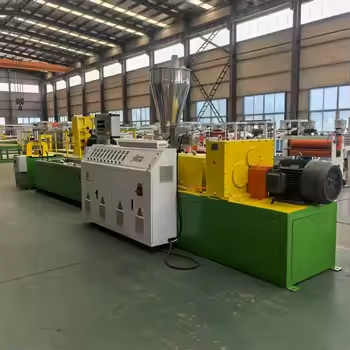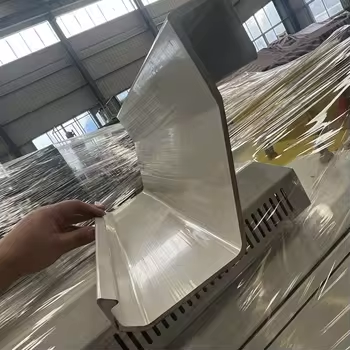- English
- Español
- Português
- русский
- Français
- 日本語
- Deutsch
- tiếng Việt
- Italiano
- Nederlands
- ภาษาไทย
- Polski
- 한국어
- Svenska
- magyar
- Malay
- বাংলা ভাষার
- Dansk
- Suomi
- हिन्दी
- Pilipino
- Türkçe
- Gaeilge
- العربية
- Indonesia
- Norsk
- تمل
- český
- ελληνικά
- український
- Javanese
- فارسی
- தமிழ்
- తెలుగు
- नेपाली
- Burmese
- български
- ລາວ
- Latine
- Қазақша
- Euskal
- Azərbaycan
- Slovenský jazyk
- Македонски
- Lietuvos
- Eesti Keel
- Română
- Slovenski
- मराठी
- Srpski језик
From Pellets to Feeder: A Look Inside the Automated PVC Chicken Feeder Production Line
In modern large-scale chicken farms, how do thousands of birds get access to fresh, hygienic feed simultaneously? The answer lies in a piece of equipment that seems simple but is crucial—the chicken feeder. Among them, feeders made from PVC (Polyvinyl Chloride) are highly favored for being lightweight, durable, corrosion-resistant, and low-cost. So how are these uniform PVC feeders manufactured? Today, we unveil the secrets of an efficient automated PVC chicken feeder production line.
Stage 1: Raw Material Preparation and Formulation
The starting point of the production line is the raw materials. The primary material is PVC resin, a white powdery pellet. Pure PVC is relatively brittle, so other additives must be incorporated to enhance its properties. For example:
· Stabilizers: Prevent the PVC from decomposing and deteriorating during high-temperature processing.
· Plasticizers: Increase the flexibility and toughness of the final product, making the feeder less prone to cracking.
· Lubricants: Allow the material to flow and release from the machine more easily.
· Color Masterbatch: Provides the desired color for the feeder (typically white or green).
These raw materials are precisely weighed by electronic scales and then fed into a high-speed hot mixer for uniform stirring and preliminary heating, resulting in a homogeneously mixed dry blend powder.

Stage 2: High-Temperature Extrusion Molding
This is the core stage of the entire production process. The blended powder is sucked into the hopper of a conical twin-screw extruder via a vacuum loader.
Inside the extruder, the material undergoes a "high-temperature journey." Heated gradually by external heating bands and the immense friction heat generated by the rotating screws, the material melts into a viscous, plasticized PVC melt. The screws function like a giant hand, simultaneously rotating and pushing the melt forward.
Finally, the melt is forced through a die head with a specific cross-sectional shape. This die directly determines the final shape of the feeder—whether it's U-shaped, V-shaped, or another improved trough design. As the continuous, softened profile emerges from the die, it immediately enters a vacuum calibration tank. Here, the profile is spray-cooled with water while vacuum suction pulls its outer wall tightly against the inner wall of the calibration sleeve, achieving precise, stable dimensions and a smooth surface.
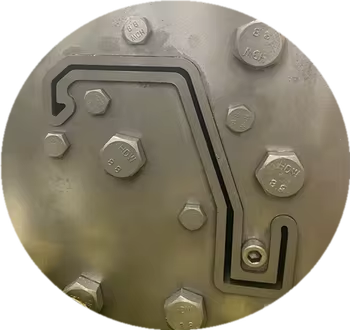
Stage 3: Cooling and Pulling
The profile exiting the calibration tank is still hot internally and requires thorough immersion cooling in a cooling water tank to completely solidify and set. Throughout this process, a puller draws the profile forward at a constant speed. Its speed must perfectly match the extrusion speed to prevent pile-up or breaking, ensuring continuous and stable production.
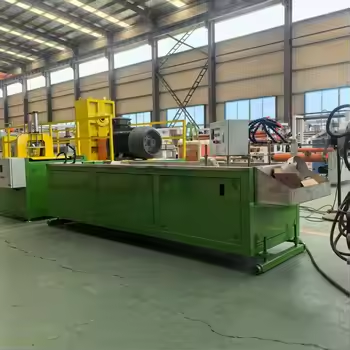
Stage 4: Fixed-Length Cutting and Collection
The fully cooled and solidified profile is now an infinitely long "feeder." It is steadily conveyed to an automatic cutting machine. The cutting machine, driven by a servo motor, makes precise cuts according to a pre-set length (e.g., 2 meters or 4 feet), resulting in clean, smooth cuts.
The finished feeder sections are then conveyed out by a belt or picked up by a robotic arm for stacking, counting, and packaging. Subsequently, they are loaded onto trucks and shipped to major chicken farms, becoming the "dining tables" for thousands of birds.
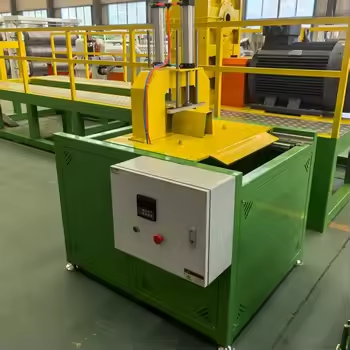
Conclusion
A modern PVC chicken feeder production line is a model of mechanization, automation, and chemical technology integration. From tiny PVC pellets to neat and practical farming equipment, the entire process is highly efficient and continuous, requiring almost no manual intervention. This not only significantly reduces production costs and ensures product quality stability but also provides a solid material foundation for the scale and standardization of modern poultry farming. The seemingly ordinary chicken feeder holds considerable technological sophistication behind its simple appearance.
